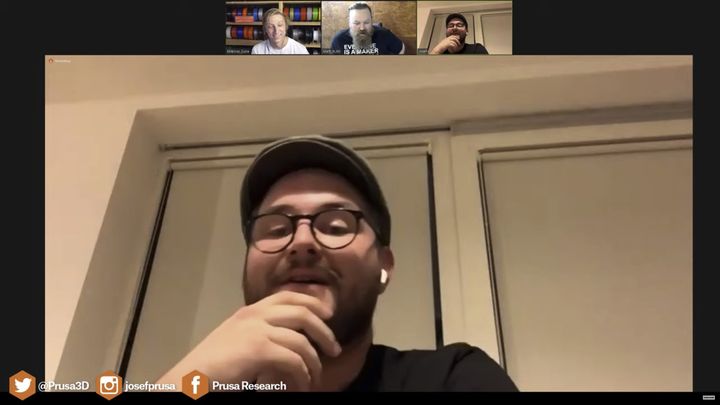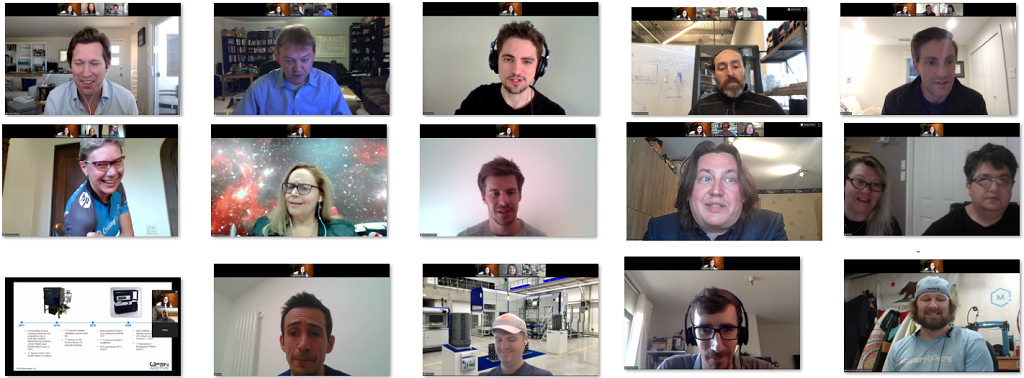
One of the unfortunate aspects of COVID-19 is the cancellation or postponement of 3D print trade shows worldwide.
Our team regularly attends these events where we are able to interact with dozens and sometimes hundreds of vendors in quick succession. We can see equipment, handle samples, ask questions and, of course, load up with tons of specifications brochures.
But that seems to be not a thing in 2020, and 3D print companies are forced to try new things to maintain a connection with their clients and prospects. Some of the methods are quite interesting, and in a way it’s possible to maintain more connections than before, albeit electronically.
Let’s take a look at what some 3D print companies are doing.
3D Print Webinars
While webinars feel like they have been around for centuries, there’s a lot more happening these days. It seems that nearly every company is doing them. Some had been doing them regularly, like 3D Systems, before the crisis, and now continue to do so. Others are new to the webinar game, but provide content targeted at existing clients or those looking to become one.
We’ve seen so many webinars pop up we introduced a new service: a monthly webinar digest where we try to compile a list of as many relevant webinars as possible and present them in a single newsletter. You can get your own copy by signing up to Fabbaloo’s distribution list here.
Virtual Conferences
We’ve now seen this a few times where a company attempts to produce a “virtual conference”. Specialized software is used to emulate the activities that might have occurred in a physical conference: keynote speakers, questions & answers, and even networking.
One type of virtual conference software even allows one to “sit at a virtual table”, just as you would do in real life. It’s not quite the same, but it’s a unique way to participate online.
One company that’s been doing virtual conferences is Ed Tyson’s Institute of 3D Printing, which presented a full two-day event a few months ago. It’s likely we’ll see more of these virtual events in the future as 3D print companies figure out the best ways to do them.
Podcasts

A podcast is a little bit like a webinar without the video component, but they tend to be more conversational. Typically two or more individuals discuss topics of interest on a regular basis. It’s possible to subscribe to a podcast using any of several tools available for desktop and mobile devices, such as Spotify, Apple Music, Stitcher and others.
One 3D print company that’s gone big into podcasts is Ultimaker, who now produce a biweekly podcast hosted by their community manager. They release a new episode every Tuesday and plan for ten episodes in their first season. It sounds like podcasting will be a long-term thing for Ultimaker. You can find out more about Ultimaker’s “Talking Additive” podcast here.
Live Event

One company that’s always on the edge of the envelope is Prusa Research, who this week attempted a live YouTube event. This type of event is a live stream available to anyone through YouTube. After the live event concludes, it’s possible to post the session for later replay for anyone who missed it.
What’s really interesting about a YouTube event is that it’s possible to easily interact with the audience. In Prusa Research’s event there were around 1500 live viewers, many of whom posed questions or comments. In fact, there were so many questions they could not possibly be answered by Prusa Research officials who appeared live on the stream.
It’s likely Prusa Research will continue these livestreams in the future, as the first event was titled, “#1”. You can subscribe to the Prusa Research YouTube channel here.
Zoom Meeting

Yes, we’ve all been on Zoom meetings in the past weeks for one reason or another, but there are unique ways to use them. It’s possible to put together reasonably large events using this tool that have an interactive nature.
Sometimes they’re private, where a 3D print company might gather together a group of prospects for a dedicated question and answer session. This would be of particular interest to those companies selling larger 3D printers.
At other times 3D print companies might stage an open event where anyone with a Zoom account can join. These can be quite large, with dozens or even hundreds of attendees. The larger events can be challenging to manage, but generally they end up to be more of a presentation to an audience, rather than an interactive session.
Virtual Reality
I haven’t seen this one yet from a 3D print company, but in theory it should be quite useful. Imagine a 3D print company setting up a virtual environment that can show in detail their equipment or process. Virtual attendees could browse their way through the configuration, seeing up close how things work. This could be an excellent method for explaining radically new 3D print processes, as the virtual attendee could “zoom in” on otherwise small action scenes that would be invisible in real life.
3D print companies still need to interact with clients and prospects, and they’ll keep finding unique ways to do so.

